We answered whether or not headphones can damage your ears; now it’s time to explain the “How” part; the mechanisms behind the potential damage caused by headphones.
Understanding the factors and how headphones can damage your ears and hearing can help individuals make informed decisions about their listening habits and protect their hearing health.
You want to avoid the infirm feeling in your ears may be due to the disruption of nerve impulses, which, unfortunately, can’t regenerate once they’re damaged. So, let’s dive into the nitty-gritty of this nuanced issue.
- Understanding How Headphones Can Damage Your Hearing: Loudness, Duration, Distance & Frequency
- How Headphones Damage Your Ears (Physically)
- How Can Headphones Damage Your Ears (Health-Wise)
- Infections & Hearing Loss: How Earbuds Damage Your Ears
- How Can Headphones Cause Cancer? Wireless & Toxic Materials
Understanding How Headphones Can Damage Your Hearing: Loudness, Duration, Distance & Frequency
If you don’t know yet how headphones can damage your hearing, we’ll get to that very soon.
Before getting into the science behind headphone-related hearing issues, let’s outline the key physical factors contributing to the damage:
- Loudness
- Duration of exposure
- Distance from the sound source
- Sharpness/frequency of sound
Fun fact: To protect your hearing, acoustical engineers model the propagation, absorption, and reflection of sound that take all of these factors into account when analyzing the sound pressure level of a headset at ear level.
Loudness
The primary way headphones can damage your ears is by exposing them to high sound levels. The World Health Organization (WHO) recommends a maximum volume of 85 decibels (dB) for up to 8 hours daily. However, many stubborn people listen to music at much higher volumes, sometimes reaching 100 dB or more. Prolonged exposure to loud sounds can cause noise-induced hearing loss (NIHL), a gradual and permanent loss of hearing.
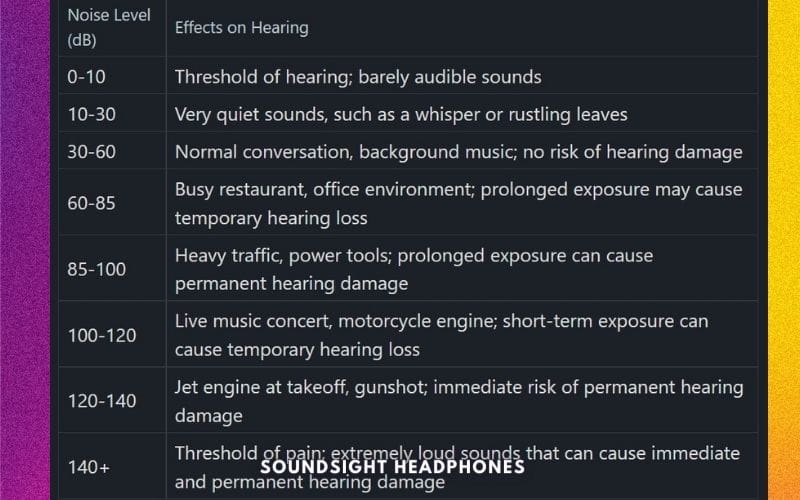
Equal Loudness
The human ear is more sensitive to high frequencies, particularly those in the 2,000 to 5,000 Hz range, as demonstrated by the Fletcher-Munson curves—established in 1933—and the international standard, ISO 226.
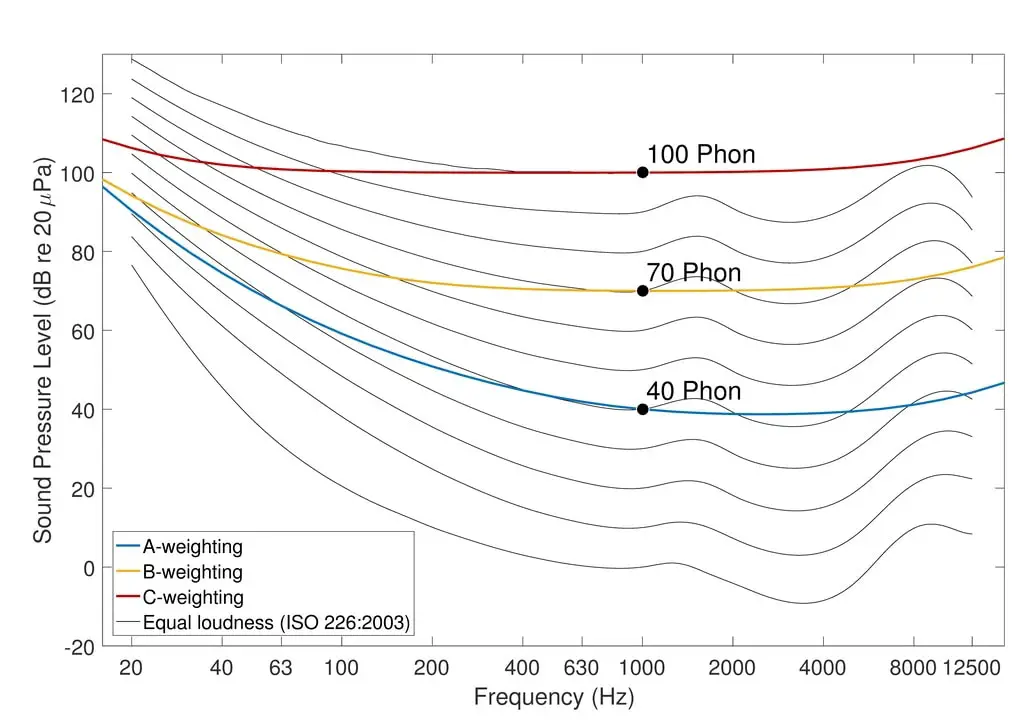
That said, headphones can potentially damage your ears since even low-amplitude high frequencies are louder due to higher harmonics.
A 10 dB 20 kHz sound is perceived loud as 60 dB 10 Hz sound.
To showcase the varying sensitivity of the human ear to different frequencies, one can refer to the equal-loudness contours, which are graphical representations of the sound pressure levels required for various frequencies to be perceived as equally loud.
Loudness compensation features—such as amplifier adjustments or "loudness" buttons—balance frequency components for consistent perceived loudness at lower volumes to counteract this sensitivity.
Awareness of the link between headphones and ear damage and how bright headphones can be more harmful due to their emphasized treble response is crucial.
Duration of Exposure
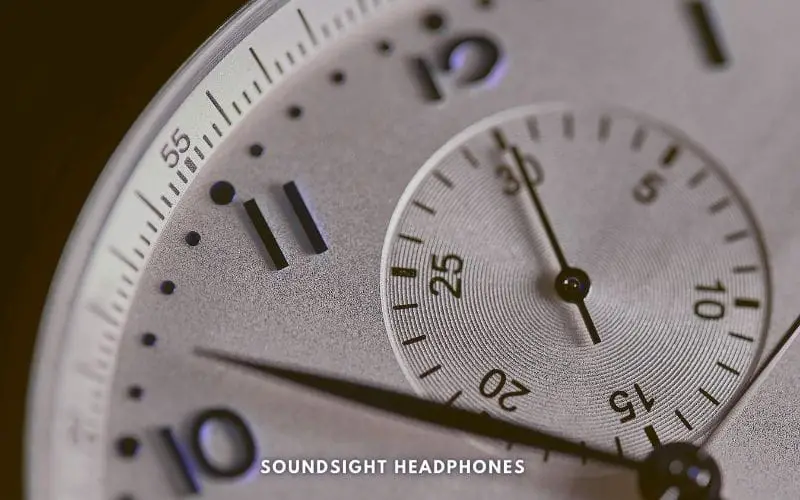
The time you spend listening to music through headphones also significantly increases the risk of hearing damage. The longer you are exposed to loud sounds, the greater the potential for hearing loss. As mentioned earlier, the WHO recommends a maximum of 8 hours of exposure to 85 dB per day.
Duration of Safe Listening Levels dB
| Sound Level (dBA) | Maximum Exposure Time |
|---|---|
| 82 | 16 hours |
| 85 | 8 hours |
| 88 | 4 hours |
| 91 | 2 hours |
| 94 | 1 hour |
| 97 | 30 minutes |
| 100 | 15 minutes |
| 103 | 7.5 minutes |
| 106 | 3.75 minutes |
| 109 | 1.875 minutes (1 minute, 52.5 seconds) |
| 112 | 56.25 seconds |
| 115 | 28.125 seconds |
| 118 | 14 seconds |
| 121 | 7 seconds |
| 124 | 3.5 seconds |
| 127 | 1.75 seconds |
| >130 | Instant hearing loss |
Distance From Sound Source
The distance between the sound source (driver, speaker, etc.) and your ears plays a role in the potential for hearing damage.
The physics of sound dictates that as the distance from the sound source increases, the intensity of the sound decreases. And there’s a formula for it.
The formula for the inverse square law is: I = P / (4 * π * r^2). Where:
- I is the intensity of the sound (measured in watts per square meter, W/m²)
- P is the power of the sound source (measured in watts, W)
- r is the distance from the sound source (measured in meters, m)
- π (pi) is a mathematical constant, approximately equal
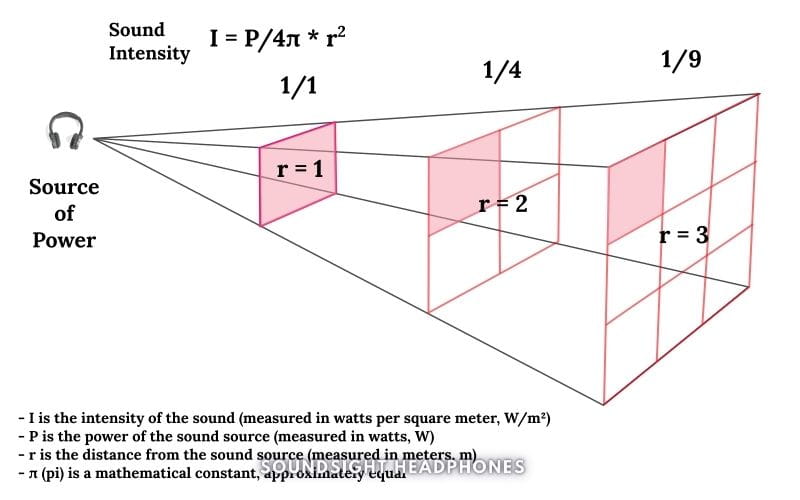
The inverse square law dictates that sound intensity diminishes proportionally to the square of the distance from its source. Simply put, doubling the distance reduces intensity/SPL by 6 decibels (dB).
| Distance (feet) | Sound Intensity (dB) |
|---|---|
| 1 | 140 |
| 2 | 134 |
| 4 | 128 |
| 8 | 122 |
| 16 | 116 |
| 32 | 110 |
| 64 | 104 |
| 128 | 98 |
| 256 | 92 |
| 512 | 86 |
Sound waves spread out as they travel, and the energy of the sound is distributed over a larger area as the distance increases. However, notice that you can hear obnoxiously loud noises from 500 feet away at a sound intensity of 86 dB.
Sharpness/Frequency of Sound
Another factor that can contribute to hearing damage is the sudden, sharp noises that can also induce tinnitus. Similarly, the frequency of sound is particularly significant, as individuals predominantly experience high-frequency hearing loss.
How Headphones Damage Your Ears (Physically)
To understand how headphones can damage your ears, it’s important to start with an exploration of the human ear’s complex anatomy, featuring the structures that enable us to perceive sounds.
As we delve deeper, we uncover the adverse effects of headphones and loud noises—how they can inflict irreparable harm on the auditory system.
Noise-Induced Hearing Loss (NIHL)
Hearing loss occurs when listening to headphones due to the transmission of sound waves with high amplitude directly into the auditory canal, reaching the inner ear—comprising the Cochlea, Vestibule, and semicircular canals.
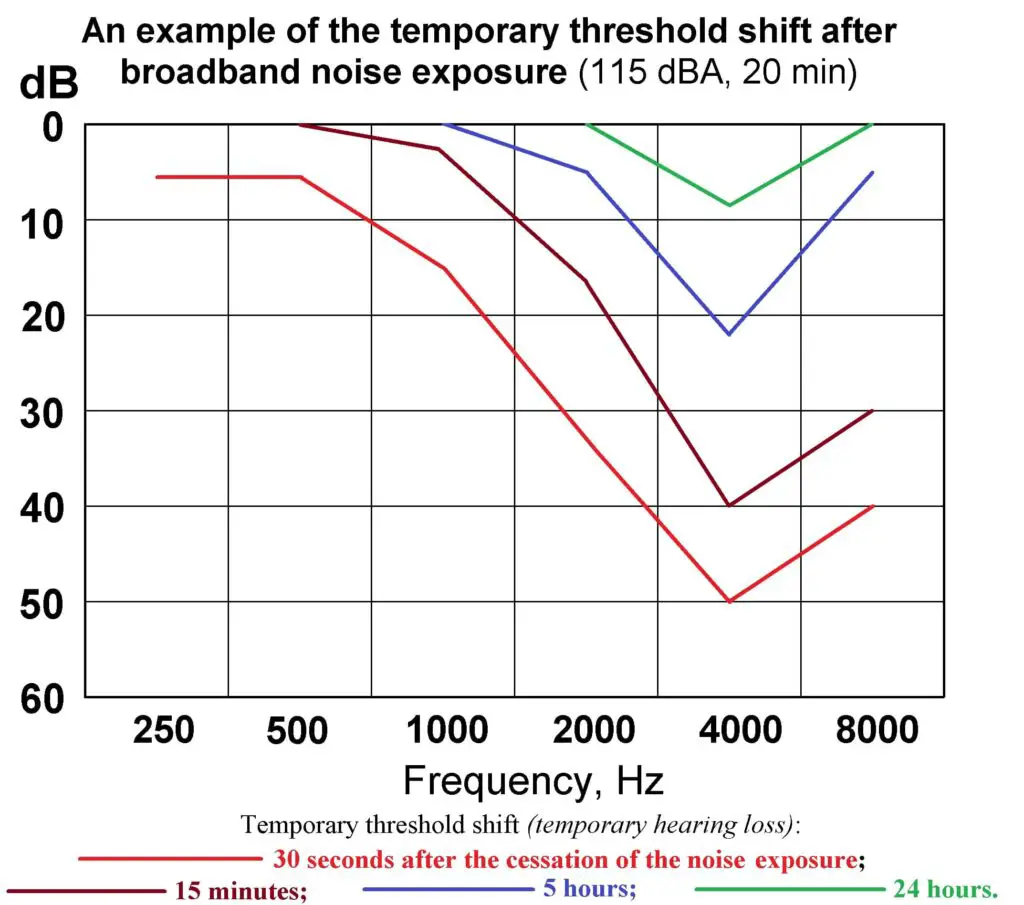
If you don’t know how headphones can damage your ears over time, let me explain.
Excessive noise exposure can lead to noise-induced hearing loss (NIHL) by causing the hair cells within the Cochlea to become damaged or destroyed. Basically, they get overstimulated and eventually lose their ability to transmit sound signals to the brain.
This damage can be temporary or permanent, depending on the intensity and duration of the noise exposure.
Inevitably, the lost sensory cells are unable to regenerate, leading to permanent hearing impairment. To prevent NIHL, it is essential to limit exposure to excessively loud sounds and practice safe listening habits when using headphones.
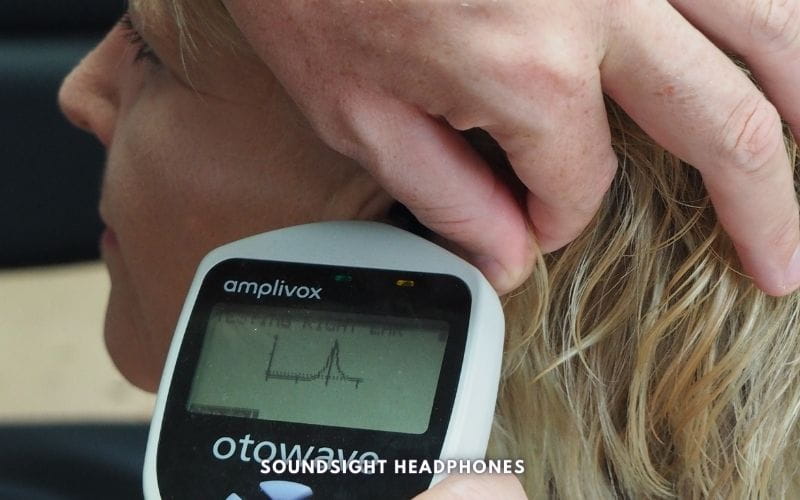
Accordingly, headphones and hearing damage go hand in hand, so keep the volume down and give your ears a break every now and then. Also, regularly check your hearing with a professional audiologist to ensure that your hearing is in good condition.
Tinnitus
The impact of headphones on tinnitus progression and aggravation remains a contested research subject.
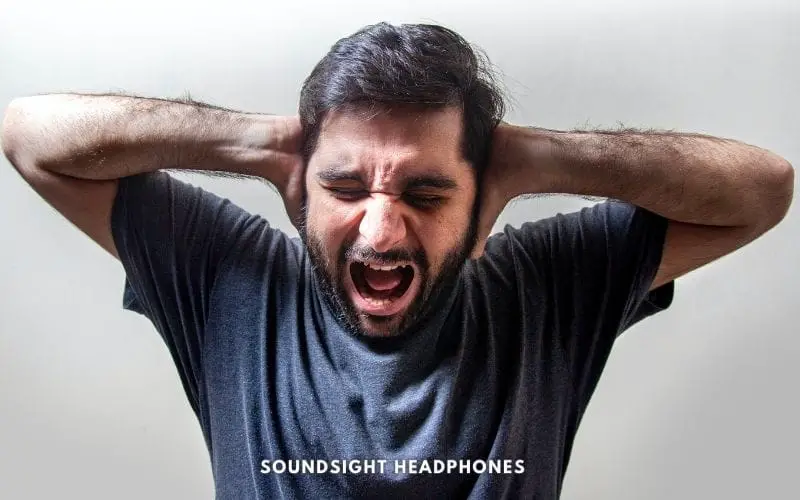
Headphone users who misuse or overuse their devices naturally have temporary Tinnitus. Over-exposure to music and high-volume sounds from headphones can cause Tinnitus through, but ear infections, nerve damage, and stress can also contribute.
Another possible cause is neurophysiological alterations and spontaneous neural activity, which makes your brain interpret random neural signals as meaningful sounds or voices—a phenomenon known as auditory hallucinations.
Broken cochlear hair cells send electrical impulses to the auditory nerve without external stimuli, causing the brain to perceive sound, either from noise-induced damage, jittery neurons, or from other factors such as age-related hearing loss, ear infections, or exposure to ototoxic medications.
Hyperacusis
Some claim that Hyperacusis is a symptom of ear damage caused by headphones. But is Hyperacusis a disability, or is your ears dialed to a higher sensitivity, leading to the perception of amplified sounds?
The most common definition of Hyperacusis is a hearing disorder caused by loud noise exposure or sudden loud noises that make everyday sounds unbearable. Simultaneously, it’s also an “exceptionally acute sense of hearing“.
However, both Hyperacusis and Tinnitus are phantom noises generated by the central system to compensate for low input from the auditory system.
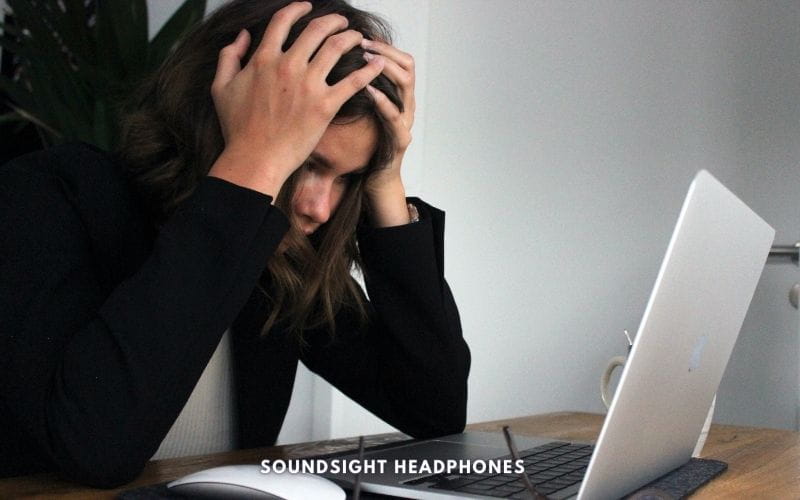
Hyperacusis & Tinnitus: Are They Related?
Both conditions share similar underlying causes, such as noise exposure from excessive headphones use, ear damage, or neurological issues.
However, even though Tinnitus sufferers, too, experience an increased auditory sensitivity, Tinnitus displays symptoms such as phantom noises, buzzing, and ringing in the ears. In contrast, Hyperacusis is characterized by increased hearing sensitivity.
Headaches & Ear Pain
Headaches and discomfort due to persistent pressure on the head and ears result from constant headphone use, improper earbuds fit, and tight on-ear headphones. Over time, this pressure can result in uneasiness, jaw pain, ear pain, and headaches, affecting glasses wearers and those with pressure sensitivity the most.
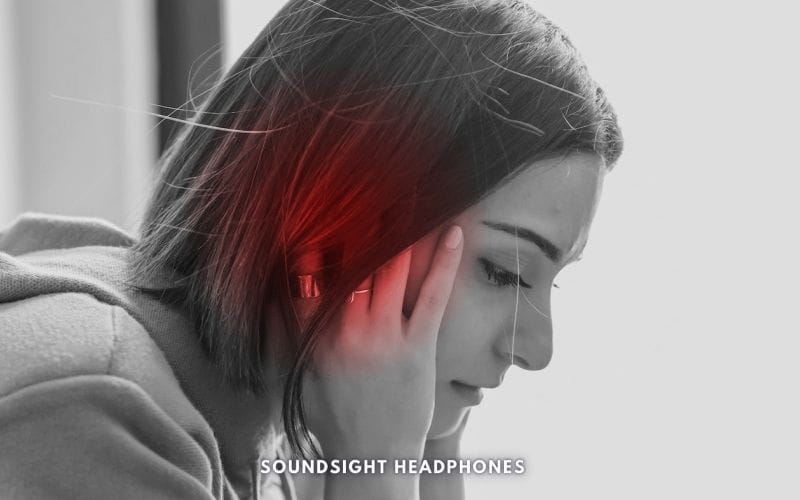
How Can Headphones Damage Your Ears (Health-Wise)
How headphones affect hearing can be a challenging answer. Still, the unequivocal truth is that headphones can harm your ears in ways other than hearing damage, leading to a plethora of health and auditory complications.
These may include:
- Allergic reactions: Materials like silicone, BPA, nickel, acrylates, and phthalates can trigger allergies, causing discomfort and inflammation.
- Infections: Prolonged use of headphones can foster bacterial growth, resulting in painful ear infections.
- Motion sickness: Triggered by active noise-canceling headphones, resulting from the auditory-visual mismatch.
- Diseases: Sharing headphones can transmit contagious diseases, such as otitis externa or “swimmer’s ear.”
- Earwax buildup: Earwax production increases due to prolonged headphone use, leading to wax blockages and potential ear infections.
Infections & Hearing Loss: How Earbuds Damage Your Ears
The topic of which type of headphone is healthier: in-ear or over-ear makes some users scratch their head. The answer: any that fit inside your ears.
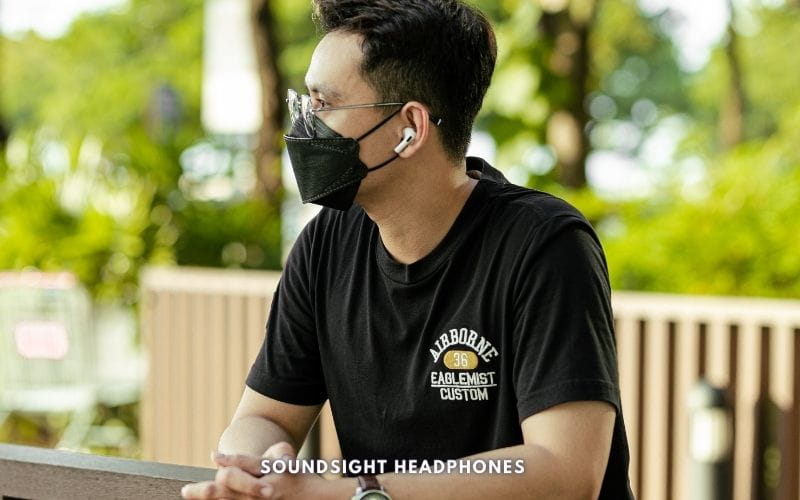
Frequent and periodic use of earbuds can slightly affect ears health by blocking earwax and increasing wax build-up. Thus, earbuds can cause ear infection, and the reason why goes as follows:
When earbuds rub against the ear canal, they inadvertently push earwax further in and, along with trapped moisture and increased temperature, it creates a breeding ground for fungi and increased bacterial growth—a staggering 700% increase in some cases after the headphones have been used for an hour.
Sometimes the earwax blockage affects the sound response, making your headphones sound hollow and distant. Whereas ear pain due to earbuds isn't excluded and could also be accompanied by a feeling of pressure inside the ear.
The type of headphones you use also plays a role in how your hearing is affected. In-ear headphones and earphones pose a higher risk of damage than over-ear or on-ear headphones due to their direct placement in the ear canal & closer sound proximity.
As we discussed, distance and sound pressure level (loudness) are determining factors in hearing damage, both of which are associated with in-ear headphones, earphones, and earbuds. These types of headphones, with an approximate 110 dB SPL, offer a 3x loudness increase compared to the 100 dB average of over-ear models.
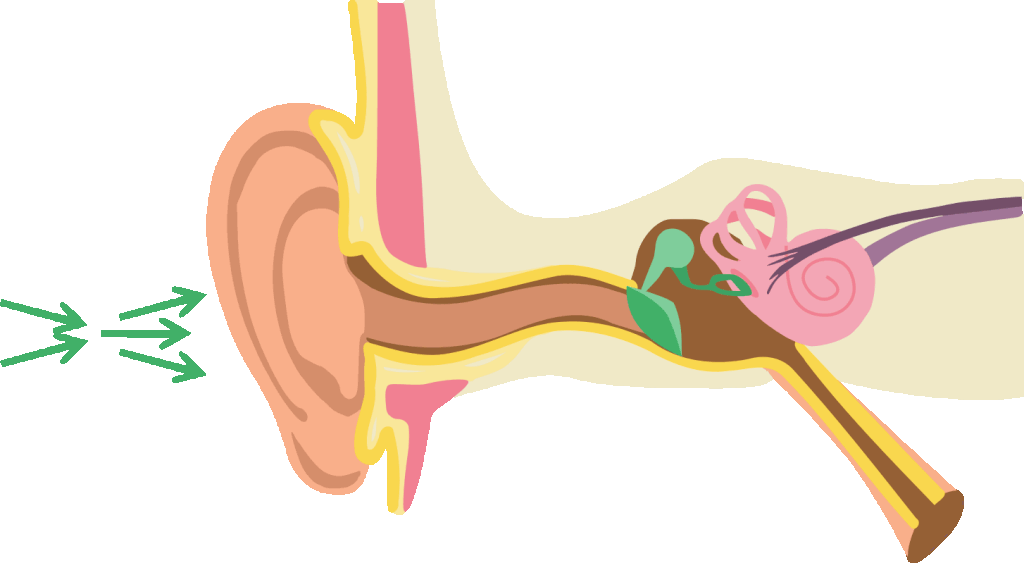
IEMs' small drivers also offer more precise treble and sometimes sharper high frequencies that can make music sound high-pitched and fatigue after 10 minutes.
The same output power from your sound source powers IEMs drivers much easier, meaning that the equivalent volume level on IEMs will be louder than on over-ear headphones. This can lead to users unintentionally listening at higher volumes, increasing the risk of hearing damage.
How Can Headphones Cause Cancer? Wireless & Toxic Materials
Headphones can potentially cause cancer through two primary mechanisms:
- Wireless radiation: Bluetooth headphones emit non-ionizing radiofrequency (RF) radiation—a type of electromagnetic field (EMF)—which, in excessive exposure, has been linked to an increased risk of cancer. However, the scientific consensus remains inconclusive.
- Toxic materials: Certain headphones may contain hazardous substances like lead, cadmium, and phthalates—toxic materials that can cause long-term health issues, including cancer.
Wireless Headphones and Radiation
In 2011, the International Agency for Research on Cancer (IARC), a part of the World Health Organization (WHO), classified RF radiation from wireless cellphones as a Group 2B carcinogen, implying it’s possibly carcinogenic to humans and a set of safety rules must be taken. This scarred the public perception of RF radiation, prompting concerns about wireless headphones’ potential cancer risk and health impact.
However, wireless headphones, such as Bluetooth earbuds, emit very low levels of radiofrequency (RF) radiation compared to other devices like cell phones. The 2.4 GHz frequency used by headsets is also a type of non-ionizing radiation which is deemed as harmless and non-cancerous.
The debate and research on the potential health risks associated with long-term exposure to RF radiation continue with polarizing results. Some studies have suggested a possible link between RF radiation and an increased risk of neurodegenerative diseases and cancer as a result of miRNA alteration.
While other studies on whether wireless technologies cause cancer have found no significant evidence to support this claim.
Are Wireless Headphones Safe?
So, are wireless headphones safe?
Yes. The only way headphones can cause cancer is through prolonged exposure to high levels of RF radiation or toxic materials, both of which are implausible with the normal use of wireless headphones.
In any case, to mitigate risks, follow these guidelines:
- Restrict continuous wireless headphone usage.
- Opt for wired headphones when feasible.
- Dispose of old or damaged headphones responsibly.
Toxic Headphone Materials
Headphones may pose a health risk due to the presence of toxic materials, as indicated by Proposition 65 warnings.

These materials, such as lead and phthalates, can potentially damage your ears and have been linked to an increased risk of cancer. However, it is essential to note that these warnings serve as a precautionary measure, and the actual risk may be minimal.
Cancerous materials used in leather tanning, such as chromium, may also be present in some headphones, particularly those with leather ear pads or headbands.
Additionally, some headphones use beryllium in their drivers for improved sound quality, which raises concerns about potential health risks. You can learn more about this issue by visiting our page on Beryllium toxicity in headphones.
